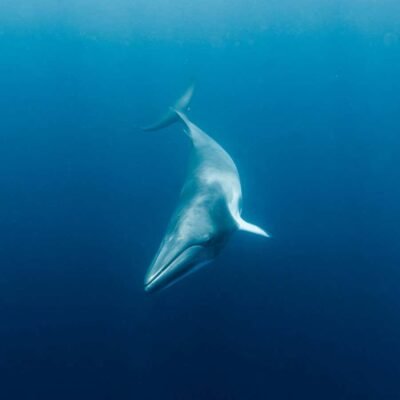
Excavations at Mololo cave on the island of Waigeo, where ancient plant resin was found
Tristan Russell (The Raja Ampat Archaeological Project)
A tiny chunk of plant resin shows humans were living on an island in eastern Indonesia at least 55,000 years ago – revealing the likely route that modern humans took when migrating to Australia.
We know that modern humans journeyed to Australia by heading south-east from mainland Asia, travelling through what is now Indonesia and many other islands of South-East Asia. The exact timing is contested, says Dylan Gaffney at the University of Oxford. Modern genetic evidence suggests humans arrived less than 50,000 years ago, but archaeological evidence points to an earlier arrival, “perhaps 65,000 or even 80,000 years ago”, he says.
What is more, the exact route they took is also contested because the geography of the region at the time was different. Earth was in a cold glacial period, so more water was locked up in ice sheets and sea levels were lower, meaning some landmasses that are now islands were connected to continents. In the western part of this region, Borneo, Sumatra and Java were all part of mainland Asia – while in the eastern part, New Guinea was joined to Australia.
This means there were two possible routes humans could have taken to reach Australia. The northern route heads directly east from Borneo to Sulawesi and on to New Guinea, then south into Australia. The southern route goes via Java, passing through Bali and Timor to northern Australia.

Possible routes to Australia
Dylan Gaffney/The Raja Ampat Archaeological Project
To help find out how people made the journey, Gaffney and his colleagues excavated Mololo cave on the island of Waigeo, one of the Raja Ampat islands just west of New Guinea and along the northern route. In the sediments on the cave floor, the team found evidence of human occupation such as charcoal and a few stone flakes.
Crucially, Gaffney’s team found a piece of resin just 1.4 centimetres across. It has an angular shape, suggesting it was cut from a tree rather than pooling naturally. Radiocarbon dating indicates it is at least 55,000 years old.
The resin was probably used as fuel for fires, says Gaffney. “It is very flammable and is a good light source in caves.” But there are other possibilities, such as fragrance or adhesive. Whatever its use, it shows that humans were on Waigeo at least 55,000 years ago. “We are demonstrating that people used the northern route,” says Gaffney.

Modern tree resin can help make fire and ancient resin may have been used in the same way
Dylan Gaffney/The Raja Ampat Archaeological Project
The finding adds to the evidence that people first reached Australia via the northern route, says Kasih Norman at Griffith University in Queensland, Australia. Geographical models always pointed to the northern route because the sea crossings are easier. “You have more water crossings between islands to do along the northern route, but the crossings themselves are shorter,” she says. Furthermore, “you can always see to the next island”.
However, most archaeological excavations focused on the southern route, says Norman. Only in recent years have researchers like Gaffney begun exploring the northern option.
One key discovery, published in July, is a 50,000-year-old cave painting of a pig found on Sulawesi, along the northern route. Likewise, a study published in May found that there was no evidence of humans on Timor before 44,000 years ago. Timor lies on the southern route, suggesting this pathway was only used later.
A final intriguing mystery in all this concerns the absence of the Denisovans – an extinct group of humans known to have lived on mainland Asia – from Australia’s fossil record. Many populations in South-East Asia carry Denisovan DNA: this includes people from Papua New Guinea, who have DNA from two distinct Denisovan groups. That hinted, but didn’t prove, that Denisovans lived on New Guinea. Yet there is no sign of Denisovans on Australia. “As far as we’re aware,” says Norman, “there’s never been anyone else [but Homo sapiens] here.”
Topics:




